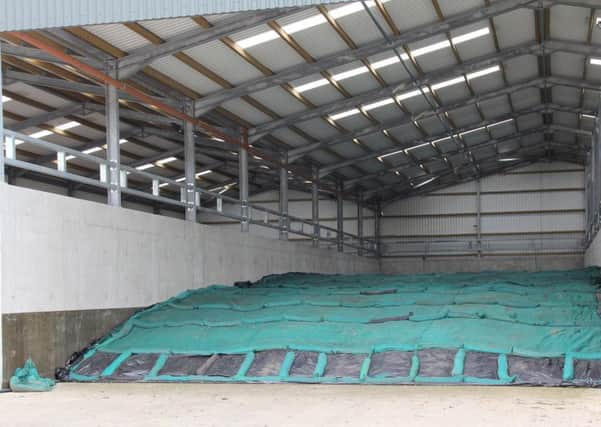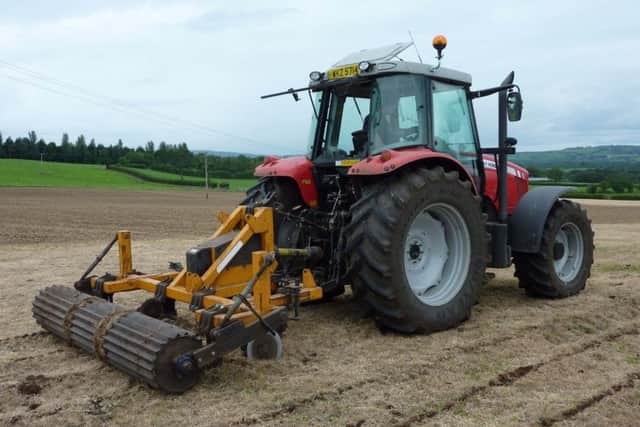DAERA Notes: Dairying


Research at AFBI has shown Calcium Ammonium Nitrate (CAN) is the most effective source of fertiliser N during the summer months.
Calculate forage requirements for winter now!
Have you enough first and second cut silage to meet requirements? If not, there is still time to plan a third cut. Use Tables 1 and 2 to estimate supply and demand on your farm. Firstly, calculate the volume of silage in your pits by multiplying the length by the width by the height. To convert volume of silage to tonnes select the correct conversion factor from Table 1 and multiply this figure by the volume figure. The conversion factor selected depends on the dry matter of the silage.
Advertisement
Hide AdAdvertisement
Hide Ad

Table 1: Conversion factors to convert silage volume to tonnes of silage
Silage DM% Tonnes of silage per cubic metre
20 Multiply by 0.77
25 Multiply by 0.68
30 Multiply by 0.60
Table 2 estimates the monthly silage requirements for housed livestock. To calculate the silage requirement for your farm this winter multiply the figures by the number of stock in each class. Then multiply this figure by the number of months you normally feed silage.
Table 2: Estimated monthly feed requirement of stock eating 25% dry matter silage
Livestock Silage (tonnes per month)
Dairy cow in milk 1.4
Dry cow 0.9
0-1 year heifer 0.6
1-2 year heifer 0.9
If you haven’t enough silage estimate how much land to close off for a third cut, taking into account that a third cut produces 10 tonnes of silage per hectare after seven weeks growth.
Advertisement
Hide AdAdvertisement
Hide AdThe CAFRE Crop Nutrient Recommendation for third cut silage at soil index phosphate 2 and potash 1 shows that 250 kg per hectare (two bags per acre) of a 22:0:10 type fertiliser and 16 cubic metres per hectare of dairy cow slurry (1,400 gallons per acre) can meet third cut needs. A sulphur containing fertiliser should also be used, applied at a rate of up to 35 kg per hectare.
Pre reseed drainage repair
Fields for reseeding may benefit from improvements to drainage or soil aeration. Clean out sheughs that are blocked with silt/grass. Also examine outflows from existing shores to ensure they are still running. If new drains are needed plan and design the most appropriate solution for the site.
Soil compaction
Compacted soil has been squashed into a solid layer, restricting root growth and reducing grass response to N. Dig test holes at least 40 cm (16”) deep to determine the extent of the problem and the depth of any compacted layer. Visible signs of compaction include a structure that is hard to break up, shallow roots growing horizontally, few worms present, a bad smell and grey colour/brown mottling. The depth of the compacted layer determines the type of machine that should be used to correct the problem.
July jobs checklist
* To maintain sward quality top grazing swards containing old dead grass or seed heads.
Advertisement
Hide AdAdvertisement
Hide Ad* Calibrate parlour and out of parlour feeders to ensure accurate feeding.
* Where necessary, burn off swards towards the end of July to allow for reseeding during August.
* Assess heifer performance to determine if they are meeting targets.
* Assess whole-crop swards and harvest when the grain is like a ‘soft cheddar’ (approximately 40% dry matter).